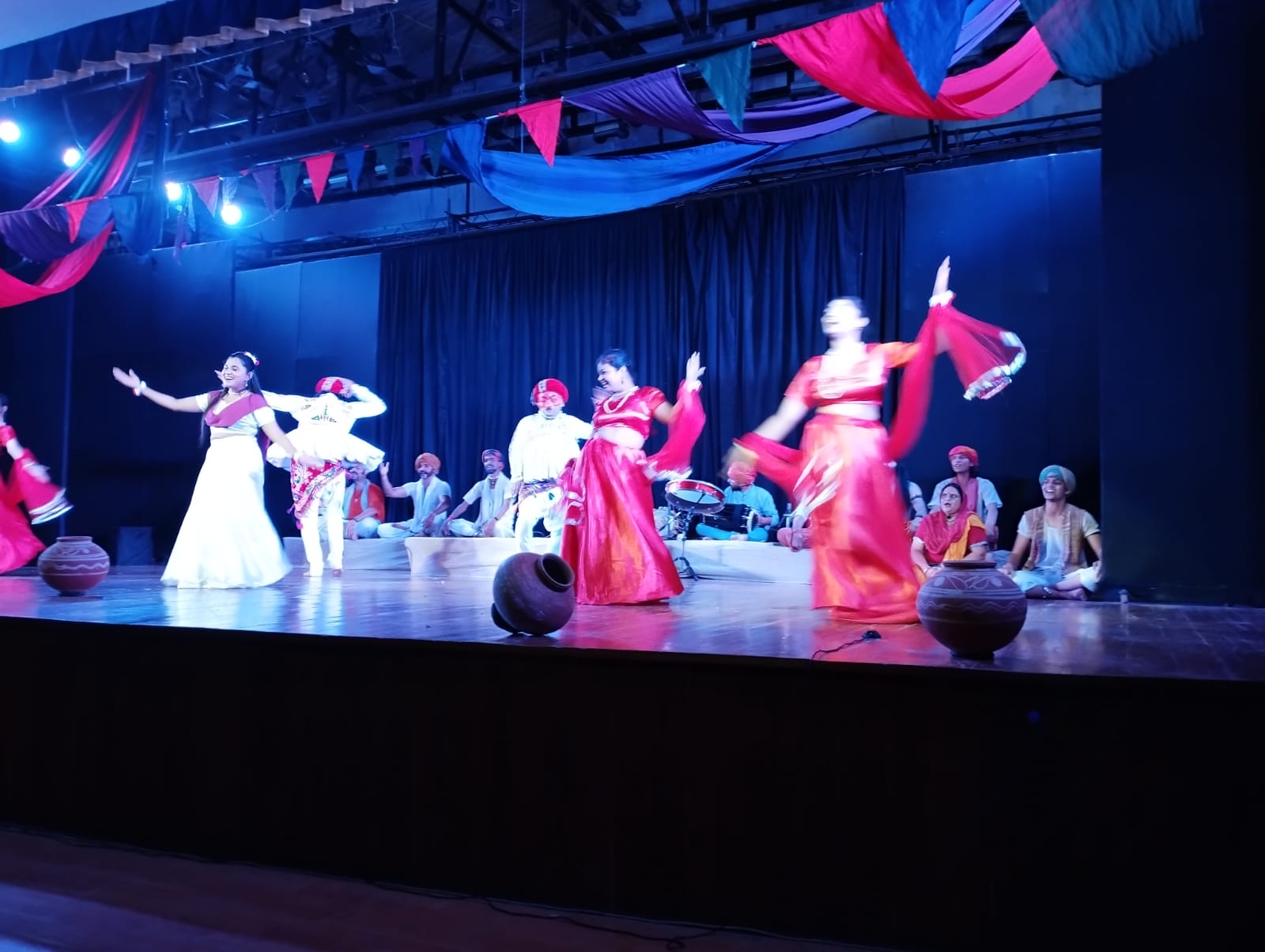
The performance of Shanta Gandhi’s Jasma Odhan, a musical play in the Bhavai folk form of Gujarat, opened a three-day drama festival organized by West Zone Cultural Centre, on September 6, 2024 in Darpan Sabhagar of Shilpgram, Udaipur.
Jasma Odhan is a poignant story about an apsara, Kaamkundala, who is cursed by Naala rishi for breaking his penance at the behest of Lord Indra. In return, the apsara, too, curses the rishi. Consequently, the apsara and the rishi are born in the poor labourers’ community of Auds as Jasma and Roopa. The circumstances lead Jasma to marry Roopa, an ugly looking and physically deformed labourer. Barot, a eunuch, tells king Siddharaj about the beauty of Jasma. Enamoured of Jasma’s beauty, the king proposes to marry her. But when Jasma refuses, he gets angry and kills her husband, Roopa. However, the play ends on a happy note when Nayak, as a divine agen,t miraculously brings Roopa back to life. The play underlines the worthiness of labour and dignity of womanhood.
Directed by multi-talented theatre artist Shusheel Kumar Sharma, the play was impactfully performed by the artists of Bareilly-based Rang Vinayak Rangmandal (RVRM), functioning under the aegis of Daya Drishti Charitable Trust of Uttar Pradesh.
Among the artists, Danish Khan as Naala rishi and Roopa stood out as the most applauded performer. His ability to achieve a complete metamorphosis from one character to another in terms of expressions, gestures, accent, and tone marked his dramatic brilliance. It was difficult to believe that the rishi and Roopa were played by the same artist. The limp in Roopa’s leg was so consistently maintained that the audience began to wonder whether it was a congenital defect of the artist himself.
Samyun Khan, portraying the apsara and Jasma, seemed to be at her best while cursing Naala rishi as Kamkundala and repelling the immoral amorous advances of king Siddharaj as Jasma. The vehemence in her voice in both contexts was commendable.
The rapid eye movement and changes in facial expressions as exhibited by Himanshu Gangwar, performing chiefly as sutradhar named Rangla, at first appeared comical and impressive, but gradually, they tended to be stereotyped when Himanshu kept repeating them even while playing other characters. His performance did contribute to humour in the play, but his racy dialogues often resulted in the loss of clarity in articulation. The same drawback was shared by his companion, Ajay Chauhaan, another sutradhar named Nayak.
The other artists, including Aashi as Neelam pari (nymph) and Bhali, Siddhi as Leelam pari and villager, Riya as apsara and villager, Vijay as Indradev, Shobhit Gangwar as Dala, Shubha Bhatt Bhasin as Dali, Muneesh as Bhala, Abhishek as Pundit Ji and villager, Sparsh as Barot and villager, Ayush as Dhoodhmal and villager, and Kshitij as king Siddhraj, were all gratifying in their performance. Most of them were in dual roles.
The play’s major elements such as music, chorus, dances, and folk costumes typically characterized its Bhavai style and contributed significantly to its vivid production. Offstage, the stage manager Lav Tomar, assistant director Kapil Pal, choreographer Ritik, light designer Roopesh Bhimta, and instrument players Anil Kumar Mishra, Rajesh Kumar Pathak, and Shailendra Singh Chouhan made a laudable contribution to the success of the play.